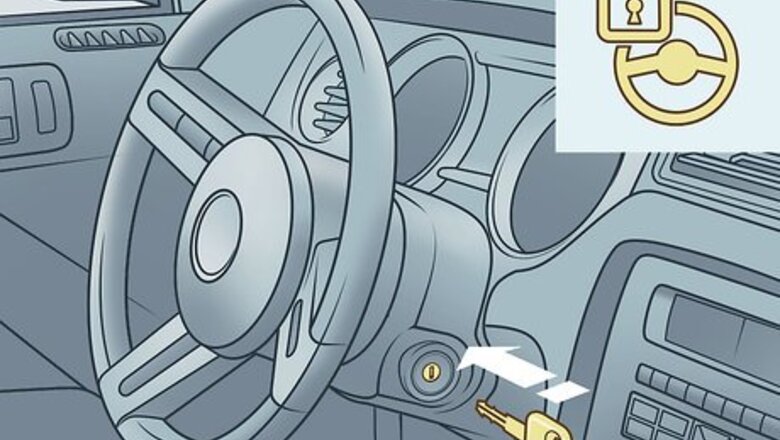
views
Unlocking Your Steering Wheel
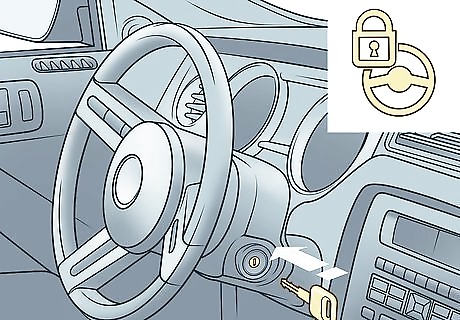
Insert the key into the ignition. Your steering wheel is likely locked because there was a bit of force on the wheel as you turned the car off last. Unlocking it will require using the ignition key in the same way you would when starting the vehicle. Insert the key into the ignition and see if it will turn. If the key will turn and start the vehicle, the wheel will unlock with the ignition cylinder.

Turn the key gently. If the key and wheel both remain locked in place, you will need to apply pressure to the key in the direction you would usually turn it. Be careful not to apply the pressure too high up on the body of the key, as that may cause the key to twist or even break while inside the key hole. Instead, apply firm but gentle pressure until the ignition comes unlocked. Note: If the key doesn't turn with slight pressure, applying more will not increase the likelihood of it turning. Instead, maintain light pressure on the key and move on to the next step. If you do need to contact an automotive locksmith, it will be much more expensive to repair an ignition cylinder with a broken key inside.
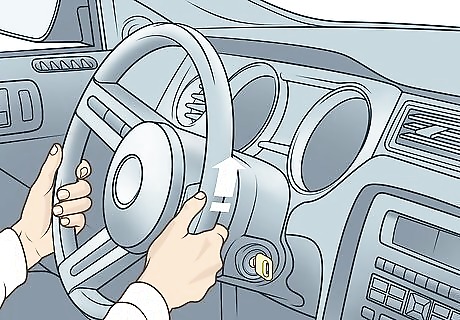
Apply pressure to the steering wheel. The steering wheel is locked in place using a pin on one side. When locked, the wheel will not be able to move in either direction freely, but one side will not allow any movement whatsoever (the side with the locking pin). Determine which direction the wheel cannot move, then apply pressure in the other direction while turning the key with your other hand. It is the process of turning the key while applying pressure to the wheel simultaneously that will unlock the steering wheel. The wheel will only move slightly in the direction opposite the pin, but won't move at all in the wrong direction.
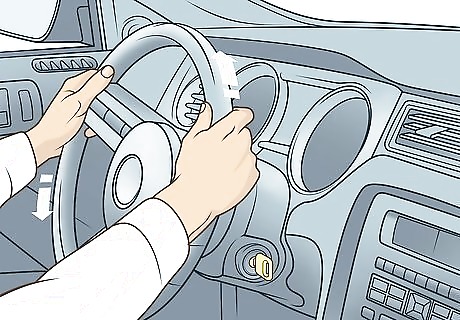
Do not shake or rock the wheel. You may be tempted to shake the wheel back and forth while attempting to unlock it, but doing so will actually decrease your chances of successfully unlocking the wheel. Instead, apply steady pressure in one direction on the wheel until it unlocks. Shaking the wheel back and forth could damage the locking pin and likely won't unlock the wheel.

Pull the key out slightly before turning it. If the key is beginning to wear out it may not be able to turn in the ignition. You may still be able to engage the pins needed to start the vehicle by inserting the key in all the way, then pulling it back out slightly. Try to pull the key back out 1/16 of an inch, or approximately the width of a nickel, then attempt to turn it again. If this works, the key is likely over worn. You should still replace the key as soon as you can before it stops working.
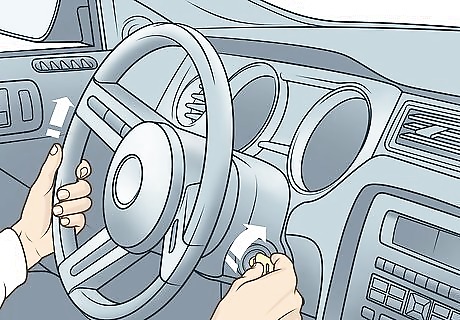
Turn the wheel and the key at once to unlock it. It may take a few tries, but if you apply pressure to the wheel in the right direction while simultaneously turning the key, it will unlock both, allowing the wheel to move freely and the vehicle to start. While it may take a fair amount of pressure, do not force either the wheel or the ignition to turn if they seem like they won't. It may result in breaking the steering pin, your key, or other internal components. Once the two are unlocked, the vehicle is able to be driven. If the steering wheel does not unlock, you will need to trouble shoot the problem.
Loosening Sticky Locks
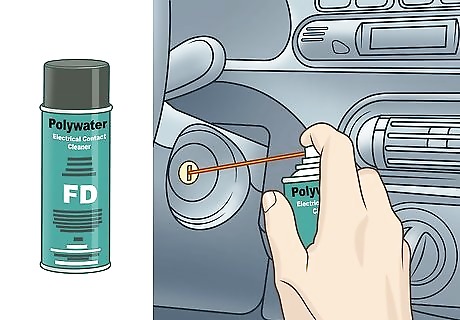
Use a small dose of electrical cleaner in the key hole. If the ignition cylinder has seized, spraying a small amount of electrical cleaner into the key hole may lubricate it enough to turn. Be careful not to spray too much into the key hole. A few short squirts should suffice. Once done, insert the key and turn it back and forth gently to work the lubricant in. Tip: Liquid graphite may also work to lubricate the cylinder. If this works, you may need to replace the ignition cylinder soon as it gets progressively worse.
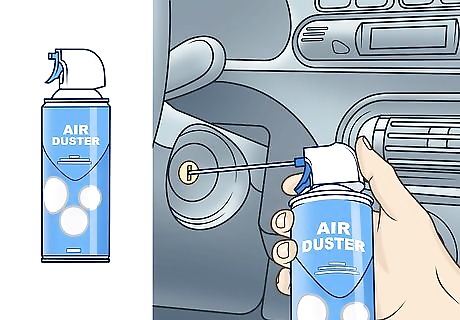
Spray canned air into the ignition. Debris caught in the ignition can prevent the key from turning, which will prevent the steering wheel from unlocking. Purchase canned air from a local retail or office supply store and insert the straw from the nozzle directly into the key hole. It should only take a few short sprays to clean out any debris. Put on eye protection before spraying canned air into the key hole to prevent debris from getting into your eyes.
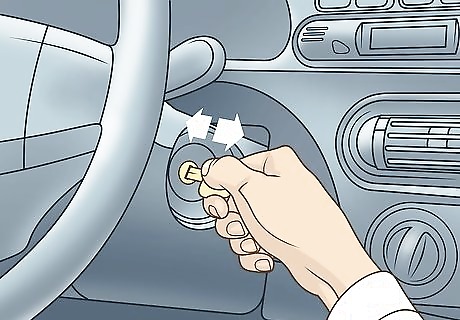
Gently slide the key in and out a number of times. If there was any debris stuck to the key when you inserted it, it may have gotten caught in the pins of the ignition cylinder. Insert the key completely, then slide it back out. Repeat the process a few times to try to move any debris that may be caught in the cylinder. If this works, the issue will likely continue to occur until the debris is cleaned out from the ignition cylinder. Use canned air to clean out the lock cylinder if this method worked.
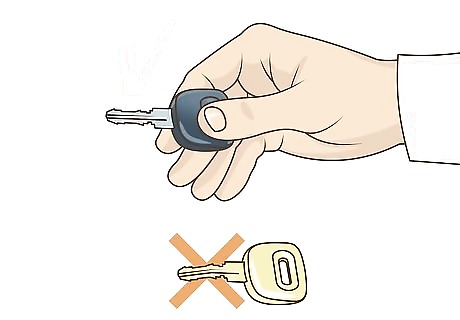
Ensure the key is not bent or damaged. If your key won't turn when you insert it into the ignition it may be because the key has been damaged. Rounded or chipped teeth on the key will no longer engage the pins in the ignition cylinder to the depth necessary to spin it. Any of these could result in the key failing to turn in the ignition, which will also prevent the wheel from being unlocked. If you have an extra key, see if that will work to unlock the ignition. If it does, chances are the key you regularly use has just gotten worn down and needs to be replaced. You will need a replacement key if the key is too damaged to turn the ignition cylinder. Do not copy a damaged key. A replacement will have to be cut by a dealership that works with vehicles of your make and model.
Replacing the Ignition Lock Assembly
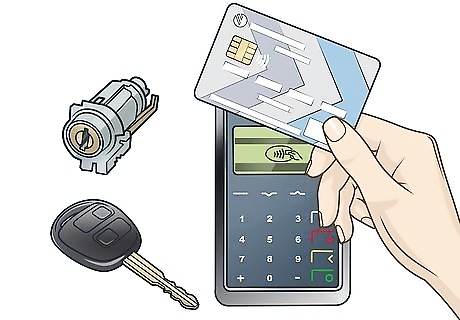
Purchase a new ignition lock assembly. Ignition assemblies are easily replaced in most vehicles and can be done at home by most hobby mechanics. Before getting started, you will need to order a replacement assembly from your local auto parts store. Be sure to give them the exact year, make and model of your vehicle to get the correct replacement part. Tip: Vehicle manufacturers don't change part numbers often and obtaining the correct replacement from part stores is not usually an issue. Purchase a new ignition lock assembly prior to the removal of a failed assembly. Compare the two and verify the replacement is an identical match before attempting reinstallation.
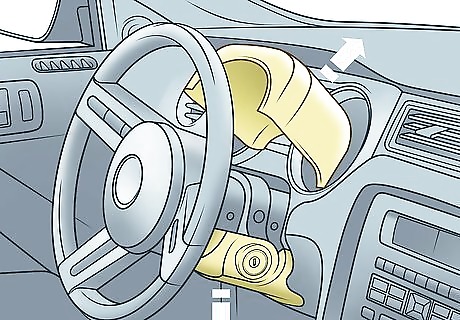
Remove the cover over the ignition. Generally, most vehicles have a split-plastic housing that covers the steering column and ignition lock assembly. Remove this plastic cover by first adjusting the tilt-wheel to its lowest position and then removing the fasteners holding the cover in place. In some vehicles, the cover will include the portion above and below the steering wheel, while in others the ignition cover will be separate. If it's not equipped with an adjustable steering column, remove the steering column support brace under the dashboard and allow the column to hang. Remove the fasteners from the column cover, separate the two halves and remove the plastic.

Use an Allen wrench to release the ignition assembly. Identify the ignition assembly and remove any trim components that prevent access to the ignition wire harness connector and tumbler release hole. Insert a 9/32” Allen wrench into the release hole while turning the ignition key backward. Use the ignition key to pull the entire assembly out by pulling it toward the passenger side of the car. Take care to unplug the ignition switch wire connector as you remove the ignition cylinder.
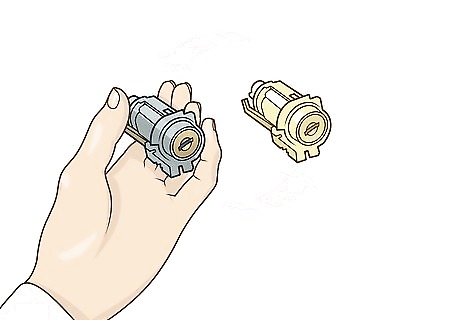
Make sure the new ignition switch is well-greased. Once the ignition assembly is removed, compare the new switch and ensure they match. New ignition switches come pre-lubed from the factory ready to install. Verify the presence of grease on all external moving parts and ensure the new key fits and that the cylinder rotates smoothly in both directions. If the ignition cylinder is not properly greased, apply liquid graphite or similar grease to the cylinder. Purchase grease at your local auto parts store if necessary.
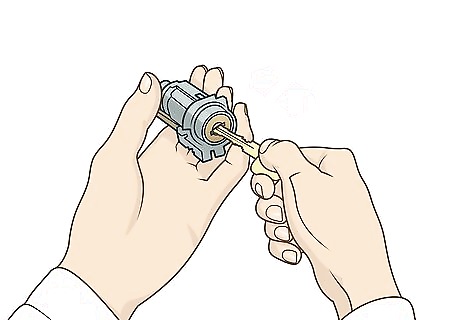
Ensure that the internal lock pins can move freely. You can make sure the internal lock pins move properly by inserting the key completely in and out of the keyhole several times. The key should not get caught or stuck on its way into our out of the key hole. Sticking lock pins are lubricated using powdered graphite that is applied directly inside the keyhole. Graphite comes in small tubes designed to “squirt” the powder with enough force to reach the back of any keyhole. It can be added when needed.
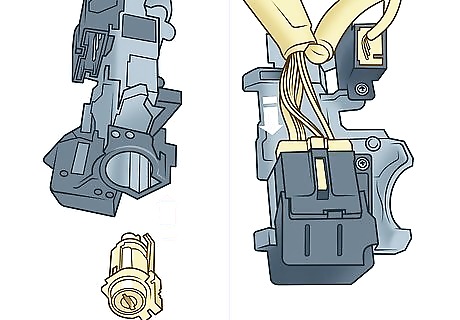
Slide the cylinder into place and reconnect the switch plug. When satisfied the new assembly matches the old one and is properly lubricated, slide the cylinder into position and make sure it is locked in place. Reconnect the switch plug and reinstall any trim components previously removed. Rotate the cylinder forward using the key until you head it click into place. Be sure to plug the ignition wire switch into the new cylinder before sliding it into place.
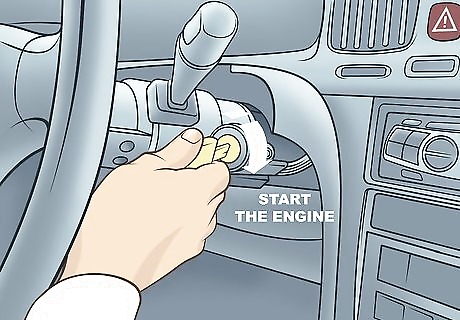
Start the engine to ensure the steering wheel lock disengages. Before securing the steering column (if disconnected) and plastic cover, check to make sure the engine will start and steering wheel lock will /disengage. Do so by inserting the key and turning it while applying pressure to the wheel in the opposite direction of the lock pin. Steering column bolts usually have torque specifications which are located in the vehicle's repair manual, in the specification section. If no torque specs are found, tighten bolts firmly using a long handled ratchet for leverage. Column bolts must be secure to ensure they don't vibrate loose while driving.














Comments
0 comment